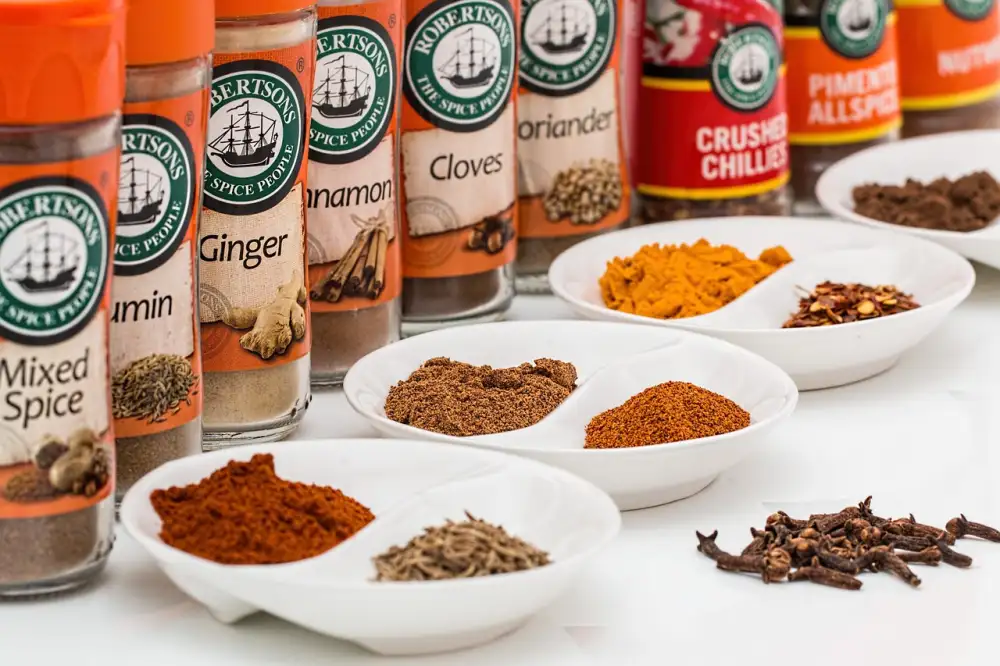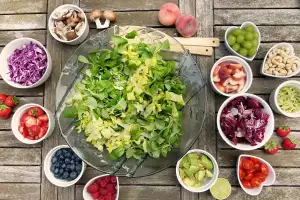The Art of Relish: Unveiling the Delightful World of this Pickled Vegetable Condiment

Relish, a condiment that adds a burst of flavor to any dish, has been enjoyed for centuries. Its origins can be traced back to ancient civilizations, where it was used to enhance the taste of bland meals. Today, relish has evolved into a culinary art form, with countless variations and flavors to tantalize our taste buds. Whether it's a tangy pickle relish or a sweet and spicy pepper relish, this delightful condiment is sure to elevate your dining experience. Join us as we delve into the world of relish and uncover its rich history and mouthwatering possibilities.
Definition of Relish as a Condiment
Relish, in its simplest form, can be defined as a condiment that adds flavor and texture to a variety of dishes. It is typically made from chopped or minced vegetables or fruits, along with spices and seasonings. The key characteristic of relish is its tangy and slightly sweet taste, which enhances the overall flavor profile of a dish. Whether it's used as a topping for burgers and hot dogs or as an accompaniment to cheese and crackers, relish brings a burst of flavor that elevates any meal. Its versatility makes it a must-have condiment in every kitchen.
Ingredients Used in Relish
Relish is a condiment that is made using a variety of ingredients, each adding their own unique flavors and textures. The main ingredient in most relishes is vegetables, such as cucumbers, onions, peppers, and tomatoes. These vegetables are finely chopped or diced to create a chunky texture. Other common ingredients include vinegar, sugar, salt, and various spices like mustard seeds, celery seeds, and turmeric. These ingredients work together to create a tangy and sweet flavor profile that enhances the taste of any dish it accompanies.
Process of Making Relish
The process of making relish is relatively simple, yet it requires attention to detail to achieve the perfect balance of flavors. The first step involves chopping the main ingredient, which can be anything from cucumbers to tomatoes or even fruits like mangoes or peaches. The chopped vegetables are then combined with other ingredients such as onions, bell peppers, vinegar, sugar, and spices.
Next, the mixture is cooked over low heat until it reaches a thick and syrupy consistency. This allows the flavors to meld together and intensify. Some recipes call for simmering the relish for hours, while others require a shorter cooking time.
Once cooked, the relish is left to cool before being transferred into sterilized jars. This ensures that it stays fresh and can be stored for an extended period. It's important to note that homemade relish often tastes better after it has had time to sit for a few days or weeks, allowing the flavors to fully develop.
The process of making relish can be customized according to personal preferences. Some may prefer a chunkier texture with larger pieces of vegetables, while others might opt for a smoother consistency by using a food processor or blender.
Overall, making relish is a labor of love that rewards those who appreciate its tangy and vibrant flavors. Whether enjoyed on hot dogs or sandwiches or used as a condiment in various recipes, homemade relish adds a delightful burst of flavor that elevates any dish it accompanies.
Varieties of Relish
Relish comes in a wide array of flavors and ingredients, making it a versatile condiment that can complement various dishes. One popular variety is the classic pickle relish, made from finely chopped cucumbers and onions. Its tangy and slightly sweet taste adds a delightful crunch to hot dogs and burgers.
Another well-known type is corn relish, which combines corn kernels with bell peppers, onions, and vinegar. This sweet and savory relish pairs perfectly with grilled meats or can be used as a topping for tacos or nachos.
For those who prefer a spicier option, there's jalapeno relish. Made from diced jalapenos, tomatoes, onions, and spices, this fiery relish adds a kick to sandwiches or can be used as a dip for tortilla chips.
Fruit relishes are also gaining popularity. Mango relish, for example, combines ripe mangoes with red onions, ginger, and lime juice. Its tropical flavors make it an excellent accompaniment to grilled seafood or roasted chicken.
Other varieties include tomato relish, onion relish, and even beetroot relish. Each offers its own unique combination of flavors that can enhance the taste of different dishes.
With such a diverse range of options available, there is a relish to suit every palate and culinary preference. Whether you prefer something tangy or sweet, mild or spicy, there's sure to be a relish that will tantalize your taste buds.
Popular Uses of Relish
Relish is a versatile condiment that can be used in a variety of ways to enhance the flavor of dishes. One popular use of relish is as a topping for hot dogs and hamburgers. The tangy and slightly sweet flavor of relish adds a burst of freshness to these classic American favorites.
Relish can also be used as a sandwich spread, adding a zesty kick to any deli meat or cheese. It pairs particularly well with turkey, ham, and roast beef, providing a refreshing contrast to the richness of the meat.
In addition to sandwiches, relish can be incorporated into salads for an extra layer of flavor. It can be mixed into potato salad or pasta salad, giving them a delightful tanginess. Relish can also be used as a dressing for coleslaw, adding both crunch and flavor.
Another popular use of relish is in tartar sauce. Mixed with mayonnaise and other ingredients like capers and lemon juice, relish creates a creamy and tangy sauce that complements fried seafood dishes such as fish and chips or shrimp po'boys.
Relish can even be used as an ingredient in cooking. It can be added to meatloaf or meatballs for added moisture and flavor. It can also be stirred into sauces or marinades to give them an extra punch.
Overall, relish is a versatile condiment that adds brightness and complexity to a wide range of dishes. Its tangy and slightly sweet flavor makes it an excellent complement to savory foods, making them more enjoyable and satisfying.
Health Benefits of Relish
Relish is not only a delicious condiment, but it also offers several health benefits. Firstly, relish is made from vegetables and fruits, which are rich in essential vitamins and minerals. These nutrients help support a healthy immune system and promote overall well-being.
Additionally, relish is often made with vinegar, which has been linked to numerous health benefits. Vinegar can aid digestion, regulate blood sugar levels, and even promote weight loss. It also contains antioxidants that can help reduce inflammation in the body.
Furthermore, relish is low in calories and fat, making it a healthier alternative to other high-calorie condiments like mayonnaise or ketchup. It adds flavor to dishes without adding excessive calories or unhealthy fats.
The ingredients used in relish are often fresh and natural, providing the body with essential fiber. Fiber helps maintain a healthy digestive system and can lower the risk of certain diseases such as heart disease and diabetes.
Overall, incorporating relish into your diet can be a simple way to add flavor while reaping the health benefits of its nutritious ingredients.
Tips for Pairing Relish with Different Foods
- For a classic combination, pair relish with hot dogs or hamburgers. The tangy and sweet flavors of relish perfectly complement the savory taste of grilled meats.
- Use relish as a topping for sandwiches and wraps. It adds a burst of flavor and texture to your favorite deli meats, cheeses, and veggies.
- Mix relish into tuna or chicken salad for an extra kick. The acidity of the relish cuts through the richness of the mayonnaise, creating a balanced and delicious filling.
- Add relish to deviled eggs for a unique twist on this classic appetizer. The crunchiness and tanginess of the relish add depth to the creamy egg filling.
- Serve relish alongside cheese and charcuterie platters. Its vibrant colors and flavors will enhance the taste experience by providing a refreshing contrast.
- Experiment with using relish as a marinade or glaze for grilled vegetables. The sweetness of the relish caramelizes beautifully, adding complexity to your veggie dishes.
- Incorporate relish into pasta salads or grain bowls for an unexpected burst of flavor. It pairs well with both cold and warm dishes, adding brightness to every bite.
Remember that when pairing relish with foods, it's important to consider the balance of flavors. Play around with different combinations to find what works best for your taste buds!
In conclusion, relish is truly a versatile and flavorful condiment that adds a burst of taste to any dish. Whether it's the tangy sweetness of pickle relish or the spicy kick of chili relish, there is a relish for every palate. Its ability to enhance the flavors of various foods makes it a must-have in every kitchen. From hot dogs and burgers to sandwiches and salads, relish can elevate even the simplest of meals into culinary delights. So next time you're looking to add some excitement to your plate, don't forget to reach for a jar of relish!
Published: 24. 11. 2023
Category: Food



